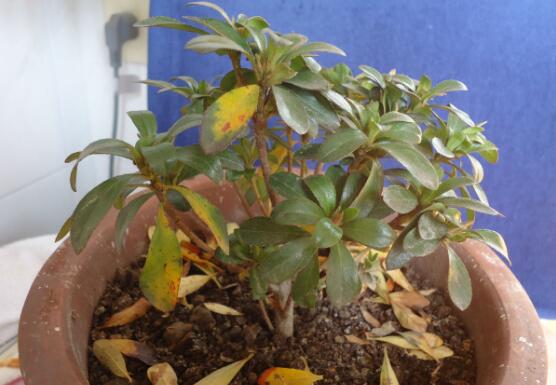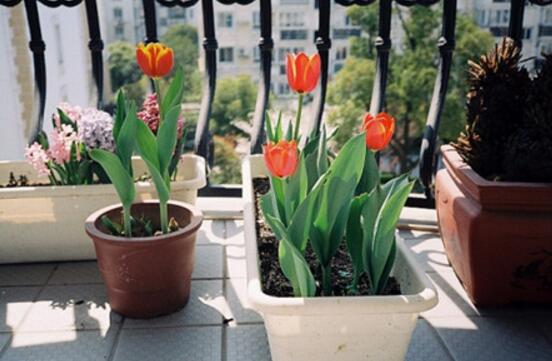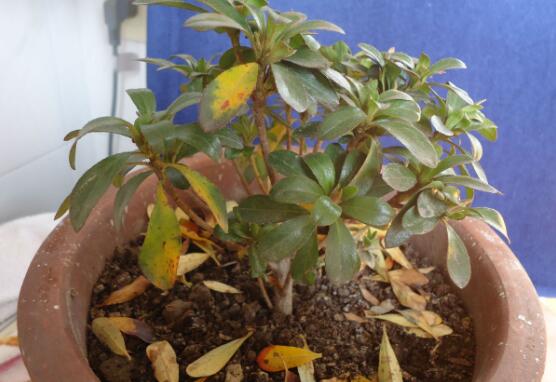What about the yellowing of rhododendron leaves? pay attention to 5: 00 away from yellowing trouble / the light is too strong.
Azalea is certainly no stranger to everyone. It is one of the top ten famous flowers in China. It is very ornamental and pleasing to the eye. However, in the process of breeding, due to various reasons, rhododendron leaves will appear yellowing symptoms, seriously affecting the ornamental effect, then rhododendron leaves yellowing how to do? Here are 5 kinds of rhododendron leaves yellowing and solutions. Go in and have a look!
First, what if the rhododendron leaves turn yellow? light is the key

In the cultivation methods and matters needing attention of azaleas, we know that azaleas have strict requirements on soil, light, water and fertilizer, and if they do not meet the standards, there will be problems with azaleas, and yellowing of leaves is just one of them. As for the rhododendron leaves yellowing how to do, in fact, it is very simple, find the cause, and then solve the problem. There are many reasons for the yellowing of rhododendron leaves, which are summarized in the following 5 items, together with solutions.
II. Causes of yellowing of rhododendron leaves and their solutions
1. Environmental change
On the Internet, many flower friends responded that when they first bought the azaleas, they looked fine. But it wasn't long before the leaves turned yellow, and they all wanted to know what to do when the azaleas turned yellow. In this regard, the editor suggests that we should consider the problem of environmental changes, because the azaleas grow in a larger environment, will not be able to adapt, resulting in yellowing symptoms of leaves.
Solution: when buying azaleas, communicate more with the store, ask about its growth environment, and strive to keep the azaleas growing environment unchanged after buying it. If the leaves turn yellow caused by environmental changes, flower friends can slowly change the environment and let the azaleas gradually adapt. It is believed that in less than nine years, the leaves will return to health.
2. Soil alkalinity.
Azaleas like fertile, breathable, and slightly acidic soil. If you are careless and casually choose some alkaline soil, then there will be problems with the growth of azaleas and yellow leaves will appear.
Solution: if the rhododendron leaves are yellowed by the soil, it is best to change the soil and choose acidic soil as far as possible. Then during the growth period, pour more alum or vinegar, I believe that not too much, your azaleas will return to health.
3. Too strong or too little light
Rhododendron is a negative plant, which requires light, but it is not high. When the sun is too strong, it also needs shading. Once the light is too strong, it will cause the rhododendron branches and leaves to grow, and the leaves to be thin and yellow. In addition, if the azaleas can't see the light for a long time, its leaves will turn yellow.
Liberation method: when the light is too strong, you need to move the flowerpot to the sunny or shady place in time. If it has turned yellow, you should immediately move it indoors and take good care of it for a few days; when the light is too little, when the sun is not strong, move the azaleas outside.
4. Improper temperature
Because rhododendron is a plant along the Mediterranean coast, the best growth temperature is 15-25 ℃, and it is safe to stay above 10 ℃ in winter. But once the winter temperature is too low, the azaleas will freeze, resulting in yellowing leaves and even plant death.
Solution: move the cuckoo to indoor maintenance in the middle of October every year, put it in the sunny place, and control the room temperature at about 10 ℃. If the leaves have turned yellow, they should be kept at room temperature for about 10 ℃ and can be restored after careful maintenance for a period of time.
5. Be stimulated by drugs
It is normal for azaleas to be attacked by insects, but when spraying pesticides, because the leaves of azaleas are so fragile that they cannot stand the stimulation of chemicals, the leaves may turn yellow. In addition, drastic changes in temperature, sometimes hot and cold, will also cause rhododendron leaves to turn yellow.
Solution: to avoid strong stimulation of azaleas, pesticides should be used reasonably to reduce unnecessary air pollution. In terms of temperature, pay attention to keep the azaleas warm. Do these two things. I believe your azaleas will recover soon.
What if the azaleas lose their leaves? what if the azaleas turn yellow and black?
What if the carefully maintained azaleas lose their leaves, the azaleas turn yellow and black, and the azaleas dry up? Let's ask the editor to tell you about the causes of these situations and the solutions.
What if the azaleas lose their leaves?
Rhododendron leaves are often caused by improper care, usually due to improper temperature and humidity, light, water and fertilizer.
1. Temperature and humidity are not suitable. Rhododendron is suitable for growing at a temperature of 15-30 ℃, with a humidity requirement of more than 60%. In addition, the environment is not suitable for azaleas to grow, and it is normal to lose leaves.
Solution: adjust the temperature and humidity of the environment by adjusting light, watering and other means to keep it in an environment suitable for the growth of azaleas.
2. Lack of light for a long time. If the azaleas are placed in dark corners for a long time, the leaves will easily wither and then fall. Although cuckoos like shade, they also need normal photosynthesis to grow, so they need enough light.
Solution: move the azaleas to a place with plenty of light until the weather gets warmer in spring and summer and then move to a semi-overcast place.
3. Improper water and fertilizer. Excessive drought, stagnant water in the basin and too much fertilization will cause the rhododendron to lose its leaves.
Solution: Azalea must have poor drought tolerance of its root system, so it must be watered in time in the process of planting, but it should be careful not to call too much, just the right amount, and if there is stagnant water, pour out or change the basin soil in time.
What if the rhododendron leaves turn yellow?
1. Improper water and fertilizer. The root system of rhododendron is delicate, afraid of waterlogging and fat. Such as under-watering or excessive watering, excessive fertilization or application of unmature raw fertilizer will cause leaves to yellowing and serious death of the whole plant. Water and fertilizer should be appropriate. When there is too much water and fertilizer, you can turn the basin and change the soil.
2. Soil and water is alkaline. Rhododendron likes to deceive acid loose soil, if the basin soil is alkaline or irrigates alkaline water for a long time, it will affect the absorption of iron by plants, resulting in iron deficiency and yellowing of leaves. You can buy some ferrous sulfate and water the cuckoo with 0.2% solution every day, or you can add a few drops of edible vinegar to the water to increase the acidity of the soil.
3. Poor root absorption. When the summer temperature is high, the yellowing is particularly obvious, and it will improve or return to green after the autumn is cool. Although the symptoms are similar to those of iron deficiency, iron supplementation has no effect on it. Root protection and root protection measures should be taken to deal with this kind of yellowing phenomenon. It is necessary to maintain a high temperature when overwintering, shade when it is hot in summer, spray water to cool the surrounding environment, maintain good ventilation, and promote the healthy growth and development of plant roots.
What if the leaves of azaleas turn black?
The blackening of rhododendron leaves may be caused by brown spot or black spot, which is often caused by overcast and wet growing environment or poor ventilation.
Brown spot is a major disease of rhododendron. It will make the damaged leaves yellow and fall off, affecting the flowering of the current year and the development of flower buds in the coming year. It is easy to occur in the Meiyu season when the air humidity is high.
The treatment method is to pay attention to make the plant ventilated and transparent, not to make the humidity too high, and to increase the application of organic fertilizer and nitrogen, phosphorus and potassium mixed fertilizer to enhance the plant resistance to infection and growth. If diseased leaves are found, they should be removed in time and burned centrally. At the initial stage of the disease, 0.5% Bordeaux solution or 0.4 Baume stone sulfur agent was sprayed, and 4% flour was added to increase the adhesion. Leaf spot and black spot can also be treated with the same method.
What if the azaleas are withered and wilted?
The most likely reason for the drying and wilting of rhododendron leaves is improper watering. Cuckoos like water but avoid long-term waterlogging, if long-term stagnant water in the basin, the plant is difficult to bear, the root system will first rot, and then the plant will wilt, or even die. It is recommended that the stagnant water in the tray should be poured clean, placed in a cool and ventilated place, and maintained in a semi-overcast environment. Do not water and spray water until the soil in the basin is dry. If too little watering, there will also be leaf wilting phenomenon, timely watering can make the azaleas coruscate again.
What if the rhododendron leaves turn yellow?
Causes of yellowing of rhododendron leaves
Soil and water partial alkali
The soil and water in the northern region contain more salt and alkali, and the rhododendron is an acid-loving flower. If there is a lack of soluble iron in the soil and water, the rhododendron will appear yellow leaves. So when planting, try to choose acidic soil and pour more alum water or vinegar during the growth period.
Improper lighting
Azaleas like to be cool and cool, but if they are kept in the shade for a long time, or if the light is too strong, it will cause the branches and leaves of the azaleas to grow, the leaves are thin and yellow, and they do not blossom or even bloom less, so it is necessary to move the flowerpot to the sunny or shady place in time.
Be strongly stimulated
The leaves of rhododendron are relatively fragile, and a series of chemicals sprayed to prevent diseases and insect pests may cause the leaves to turn yellow. The concentration of the agent is too high, and there are residual toxic gases, or the environment suddenly slows down, suddenly hot and cold, which will cause azaleas leaf tips or leaves to turn yellow and scorch. Pesticides should be used rationally to reduce unnecessary air pollution.
Improper temperature
The suitable growth temperature of rhododendron is 15 ~ 25 ℃, and the winter temperature above 10 ℃ can pass the winter safely. However, the weather is changeable in winter. if it is not moved indoors in time or there is a cold wind blowing directly, the cuckoo is very vulnerable to freezing damage, resulting in yellow leaves and, in serious cases, withering and dying. Therefore, in the middle of October every year, the cuckoo will be moved to indoor maintenance, put in the sunny place, and the room temperature will be controlled at about 10 ℃.
How to prevent rhododendron leaves from yellowing
In addition to controlling the temperature, moisture, sunlight and soil mentioned above, there are a few points to pay attention to:
Change the basin in time
The basin should be turned over every 2 years or so in spring or late autumn, and the basin soil should be slightly acidic sandy soil rich in humus and fertile and loose. When turning the basin, you can only replace 1 stroke 3, so as not to change the soil environment too much and affect the plant growth.
Timely pruning
Rhododendron should be pruned once a year after flowering, cut off diseased branches and weak branches, and cut short long branches, which can not only promote plant growth, but also ensure perfect plant shape and reasonable branch distribution. Proper pruning can enhance the light transmittance of the plant and promote the flowering of rhododendron.
- Prev

What if the tulip leaves turn yellow? solve the problem of yellowing at 6 o'clock / lack of light and too much water.
As the national flower of the Netherlands, you must have heard of tulips. They are rich in quality and pleasant in design and color, and are one of the favorite objects of many flower lovers. However, in the process of breeding, because of various reasons, tulip leaves will appear yellowing symptoms, then how to do tulip leaves yellowing? We have to start with soil, light, etc.
- Next

What if the azaleas lose their leaves? too little fertilization and too much watering / soil alkali is the key.
There is no need to describe the beauty of azaleas too much. Everyone who has seen them knows that they are really lovely flowers like flames. However, in the process of breeding, due to various reasons, rhododendrons will have all kinds of problems, such as rhododendron leaves yellowing, azaleas losing leaves and so on. What about rhododendrons losing leaves?
Related
- Fuxing push coffee new agricultural production and marketing class: lack of small-scale processing plants
- Jujube rice field leisure farm deep ploughing Yilan for five years to create a space for organic food and play
- Nongyu Farm-A trial of organic papaya for brave women with advanced technology
- Four points for attention in the prevention and control of diseases and insect pests of edible fungi
- How to add nutrient solution to Edible Fungi
- Is there any good way to control edible fungus mites?
- Open Inoculation Technology of Edible Fungi
- Is there any clever way to use fertilizer for edible fungus in winter?
- What agents are used to kill the pathogens of edible fungi in the mushroom shed?
- Rapid drying of Edible Fungi

